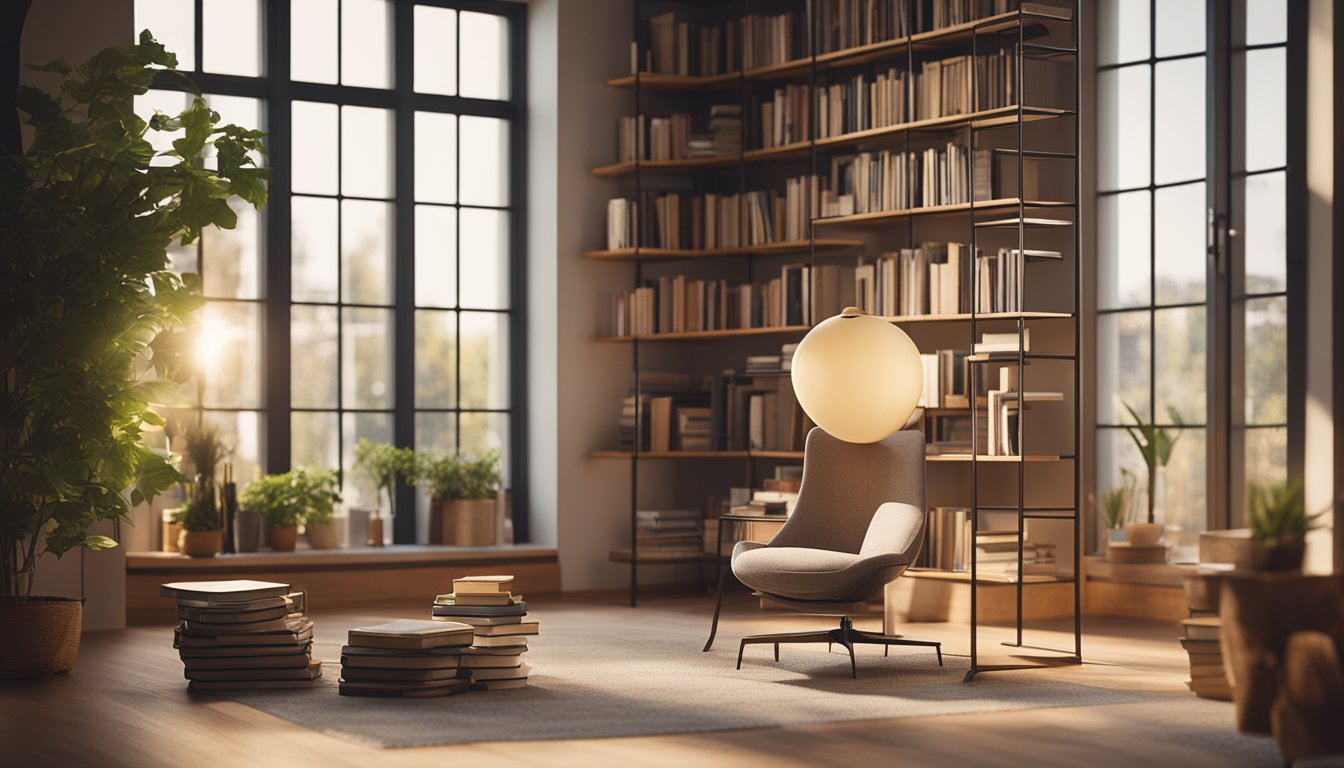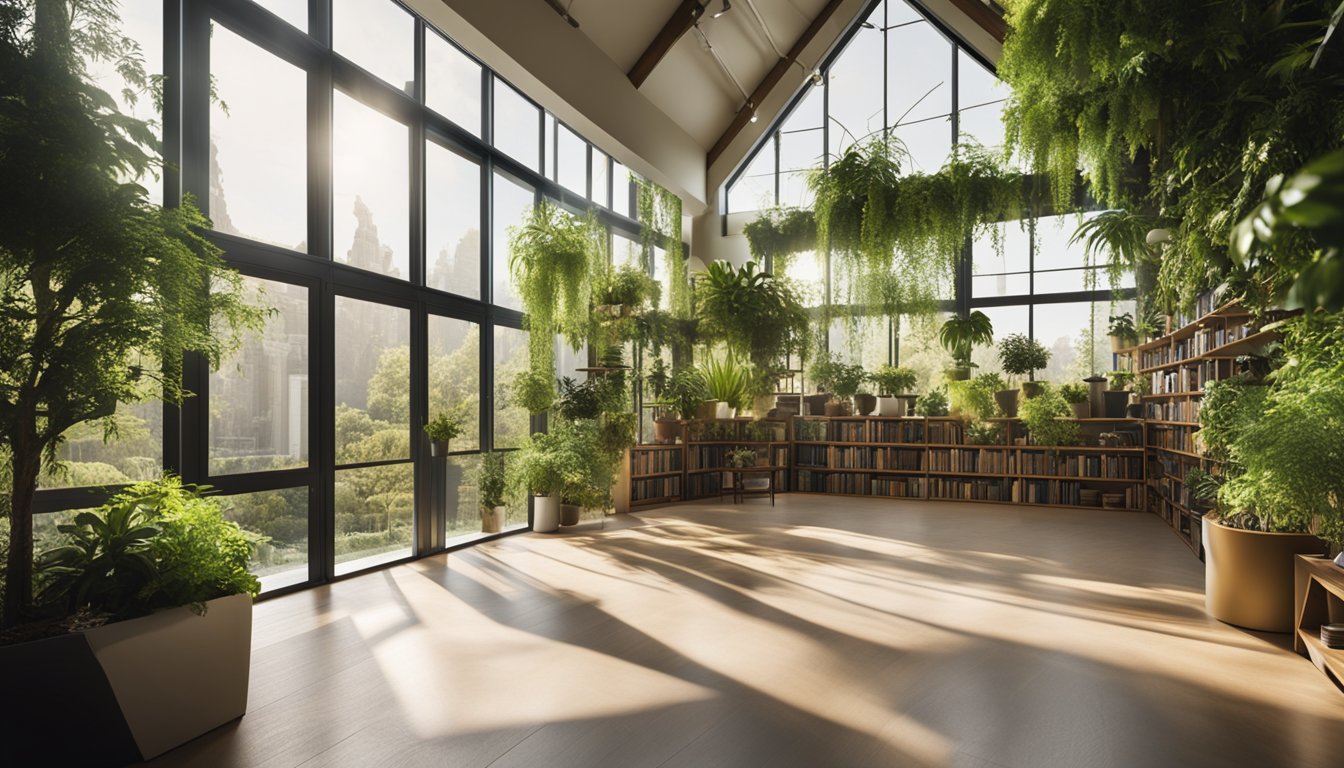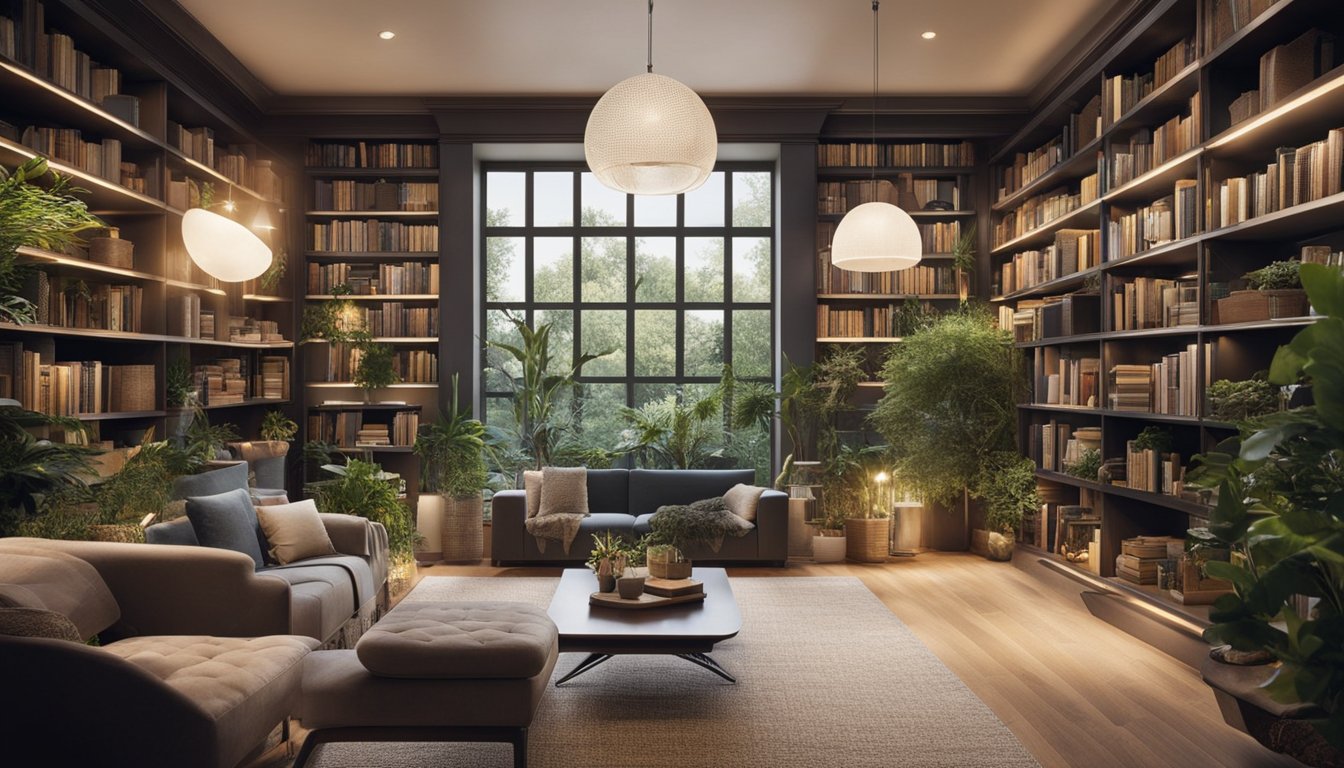Late updated: 06 May 2025 15:05
Written by: Sarah Hollister
Creating an Eco-Friendly Home Library: Sustainable Tips and Ideas
Creating an eco-friendly home library not only enriches our lives with knowledge but also supports the health of our environment. It’s an opportunity to rethink our spaces and make choices that reflect both sustainability and style. By choosing eco-friendly materials such as low-VOC wood or recycled shelves, we minimise exposure to harmful chemicals and create a safer, healthier environment.

Books play an essential role, yet sourcing them sustainably is as significant as the way we display them. Integrating thrifted books not only saves money but reduces the demand for new materials, all while adding character to our collection. Lighting, too, is crucial; natural light should be maximised to save energy and enhance our reading experience, ensuring that our library remains both inviting and sustainable.
Sustainable design encourages a thoughtful approach to how we use and maintain our spaces. From crafting the perfect reading nook to selecting eco-friendly options, the path to an environmentally conscious home library is both rewarding and achievable. Embracing this approach allows us to enjoy our passions while caring for the planet.
Key Takeaways
- Choose eco-friendly materials like low-VOC wood.
- Source thrifted books to reduce environmental impact.
- Maximise natural light to save energy.
Essential Elements of an Eco-Friendly Home Library

In crafting an eco-friendly home library, several factors play an integral role. These include choosing sustainable materials for bookshelves, selecting eco-conscious lighting, curating a collection harmoniously aligned with green principles, and incorporating art and décor thoughtfully.
Sustainable Bookshelves
Choosing the right materials for bookshelves is fundamental to sustainability. We can opt for furniture crafted from reclaimed wood or bamboo as both are durable, renewable, and have a reduced environmental impact compared to new wood products. Additionally, utilising metal or recycled materials provides further eco-friendly choices.
Modular or adjustable shelving maximises space, accommodating diverse book sizes—it's an opportunity to creatively use vertical space. Prioritising floor-to-ceiling options can provide ample storage without expanding the footprint. We embrace a blend of aesthetics and function, ensuring that each piece not only stores but enhances the environment responsibly.
Eco-Conscious Lighting Choices
Lighting plays a significant role in creating an inviting yet sustainable library atmosphere. Maximising natural light reduces reliance on artificial sources and creates a serene reading environment. We position seating and reading areas near windows, using sheer curtains to diffuse sunlight gently.
For artificial lighting, energy-efficient options like LED bulbs or fixtures powered by solar energy should be prioritised. They consume less power and have a longer lifespan. Dimmable lights and smart lighting systems can further optimise energy use, providing flexibility in adjusting brightness according to needs and times of day.
Curating a Green Collection
Selecting books for our library extends beyond genres to considering sustainability in the production and lifecycle of each item. Prioritising books printed on recycled paper or bound using eco-friendly materials contributes to reducing environmental impact. Our collection should include a mix of reference books, audiobooks, biographies, fiction, and more.
Engaging with local libraries through book swaps or borrowing keeps the collection dynamic while minimising waste. Picture books, board books, and other formats add diversity, serving different ages and interests within the household. By carefully selecting sources and formats, we contribute to a circular reading economy.
Incorporating Art and Décor Mindfully
The aesthetics of our library can be enhanced sustainably by incorporating art and décor that aligns with eco-friendly principles. We choose artwork created with natural materials or those supporting local artists who focus on sustainable practices. Displaying books attractively on the shelves can double as décor.
When it comes to decorative objects, considering second-hand and upcycled items offers unique pieces without the footprint of new production. House plants not only brighten the space but improve air quality, introducing natural beauty. Every element we introduce harmonises with the library’s function, enriching the experience while upholding environmental responsibility.
Maintaining a Healthy and Sustainable Space

Creating an eco-friendly home library requires attention to both environmental impact and personal well-being. To achieve this, let's focus on optimising climate control and taking into account weather considerations to ensure a sustainable and healthy environment.
Climate Control and Weather Considerations
Managing temperature and air quality in our library is paramount for sustainability and comfort. Utilising natural ventilation, such as opening windows or installing vents, can significantly reduce the reliance on mechanical cooling systems. When artificial climate control is necessary, opting for energy-efficient HVAC systems helps minimise our carbon footprint.
Local weather patterns influence the choice of climate control methods. For instance, in warmer climates where heat retention is less of a concern, we should invest in high-quality insulation to improve energy efficiency and maintain comfortable temperatures. This can be achieved through materials like eco-friendly insulation, which is derived from recycled materials.
Lastly, integrating smart thermostats can lead to smarter energy usage by adjusting temperatures based on occupancy and time of day. These devices enable us to reduce energy consumption, as well as maintain a consistently comfortable atmosphere, making our home library a model of both health and sustainability.
Frequently Asked Questions

Creating an eco-friendly home library involves careful selection of materials and designs to ensure sustainability. From choosing the right shelving to enhancing lighting and maintaining air quality, each decision contributes to a greener environment.
What are the most sustainable materials to use for home library shelving?
For sustainable shelving, we suggest using reclaimed wood or bamboo. These materials are both sturdy and eco-friendly. Reclaimed wood helps in recycling resources, while bamboo, being fast-growing, is a renewable choice.
Can you suggest eco-friendly insulating options for a private library room?
Sheep's wool and cellulose insulation are excellent for minimising heat transfer. Sheep's wool is natural and biodegradable, while cellulose insulation is often made from recycled newspaper. Both options ensure effective insulation while being environmentally friendly.
What considerations should be taken into account when choosing lighting for an environmentally conscious home library?
Incorporating natural light by placing bookshelves near windows is key. When artificial lighting is necessary, energy-efficient LED bulbs should be used. Dimmable lights can also help reduce energy consumption when full brightness isn't required.
How does one select books for a home library with sustainability in mind?
Selecting sustainably printed books is crucial. We should look for publishers using recycled paper and non-toxic inks. Supporting local authors and bookshops reduces the carbon footprint associated with shipping.
In what ways can a home library be designed to minimise energy consumption?
Strategically placing furniture can enhance natural airflow, reducing the need for air conditioning. Choosing light-coloured paint for walls can reflect more light, lessening the need for artificial illumination.
What are the best practices for maintaining indoor air quality in a home library?
Maintaining indoor plants can help improve air quality as they naturally filter pollutants. Ensuring proper ventilation is also crucial. We should regularly clean surfaces and books to prevent dust accumulation, contributing to cleaner air.
